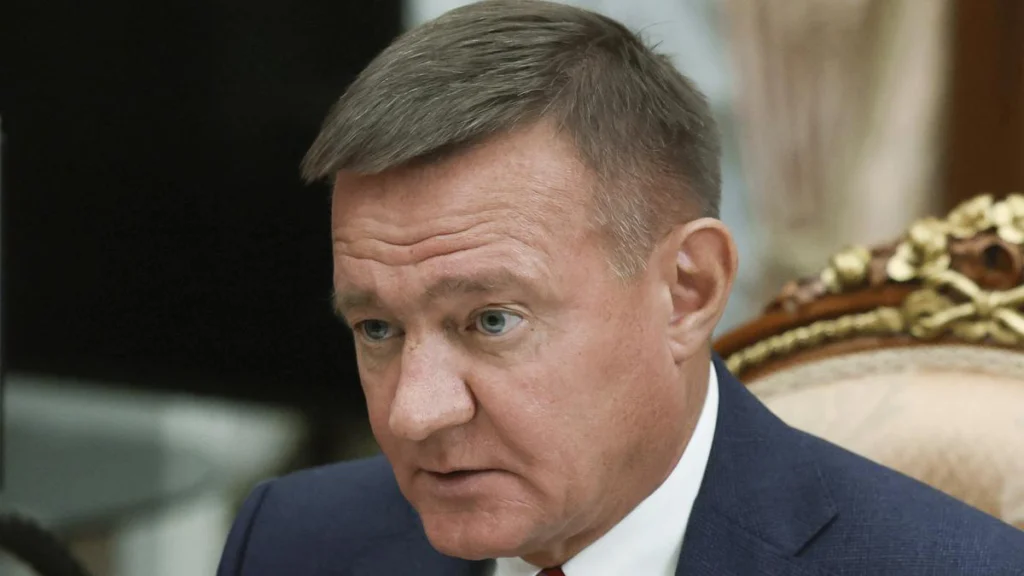Russian Transport Minister’s death fuels speculation about harsher environment for Kremlin elites

The sudden and mysterious death of Russian Transport Minister Yuri Alexandrovich has sparked a wave of speculation. Many are comparing it to the purges of Soviet dictator Josef Stalin’s era. Alexandrovich, 56, was found dead in his Moscow home, just days after attending a high-profile political meeting. While authorities have not released details about the cause of death, rumors suggest foul play or suicide. His death has become the center of discussions about the increasingly harsh environment for Kremlin elites under President Vladimir Putin.
A Mysterious Demise
Yuri Alexandrovich served as the Minister of Transport from 2016 until his death. He oversaw major infrastructure projects, including rail network expansions and airport modernizations. His sudden passing has left a gap in a ministry crucial to Russia’s economic development. Alexandrovich had been under scrutiny after several controversial transport-related incidents. These raised questions about his leadership.
Some reports say the minister died from a heart attack, but others suggest the signs don’t match such a diagnosis. His close associates point out inconsistencies. Speculation intensified when rumors about an ongoing corruption investigation surfaced. The minister allegedly faced accusations linked to multi-billion-dollar transportation contracts.
Echoes of Stalin’s Purges
The sudden and opaque nature of Alexandrovich’s death has led many to draw comparisons with Stalin’s purges. During Stalin’s reign, Soviet officials faced sudden arrests, executions, or forced suicides. The comparison has gained traction among Russian elites, who now live under constant fear of their positions. The political atmosphere today mirrors the Stalin era, where internal purges tore through the leadership.
Some sources within the Kremlin suggest that political rivalry is heightening internal tensions. High-profile figures such as former oligarchs and government ministers now avoid making waves. They know any given day could bring a career-ending scandal. Political retribution seems a real threat for those perceived as liabilities.
The Political Landscape Under Putin
Though Putin’s hold on power seems secure, internal dissent is growing. The war in Ukraine has divided Russia’s leadership. Mounting casualties and economic sanctions have raised doubts among high-ranking officials. Some have openly questioned Putin’s decisions.
Some analysts believe Alexandrovich’s death could result from such internal power struggles. The minister had become a target of factions within the Kremlin. Powerful figures may have seen him as an obstacle. Others think his death serves as a warning. It could be a message for other officials who might be considering disloyalty or dissent.
Public Reaction and Growing Fear
Public reactions have been mixed. Many Russians either dismiss the speculations or have grown numb to such events. However, the elites fear what the death of one minister signifies. The idea that one could be removed by arbitrary means—without trial or explanation—is a growing concern. Alexandrovich’s death has left them wondering how safe their positions really are.
The lack of transparency about the death fuels these fears. Kremlin officials now live in a heightened state of anxiety. They know even minor missteps can lead to disaster.
Parallels with Stalin’s Reign of Terror
Stalin’s purges, known as the “Great Terror,” led to the deaths of millions, including party members and military leaders. These purges began in the late 1930s and were infamous for their mass arrests, forced confessions, and executions. Thousands of Soviet officials were executed or sent to labor camps.
Under Stalin, the leadership lived in constant fear. The purges created a culture of paranoia, where betrayal was commonplace. Today’s Russian elite sees unsettling parallels. The memory of Stalin’s terror still looms over them. Alexandrovich’s death serves as a grim reminder of how fragile power can be in Russia.
Conclusion
Yuri Alexandrovich’s death has cast a spotlight on the harsh political environment within Russia. It highlights the growing fear among elites and the potential for violent political retribution. As speculation about his death continues, many look to the past for understanding. Stalin’s purges still resonate, and for today’s leaders, the dangers of disloyalty are more real than ever. The shadow of these purges grows longer, and the risks for Kremlin elites rise.






